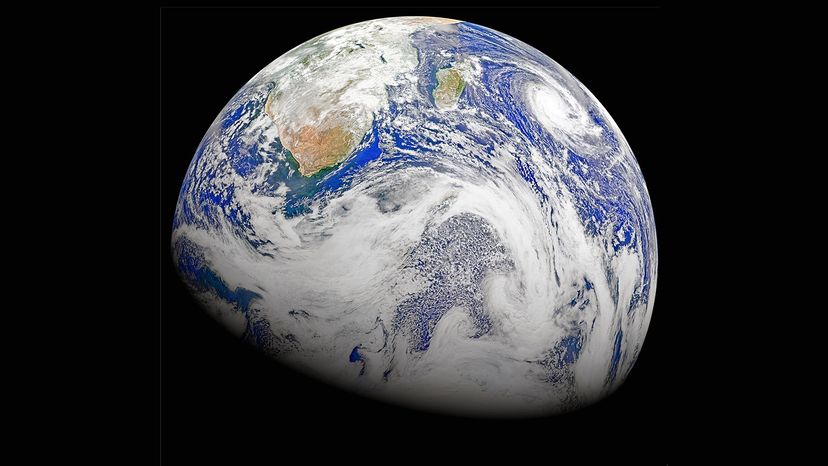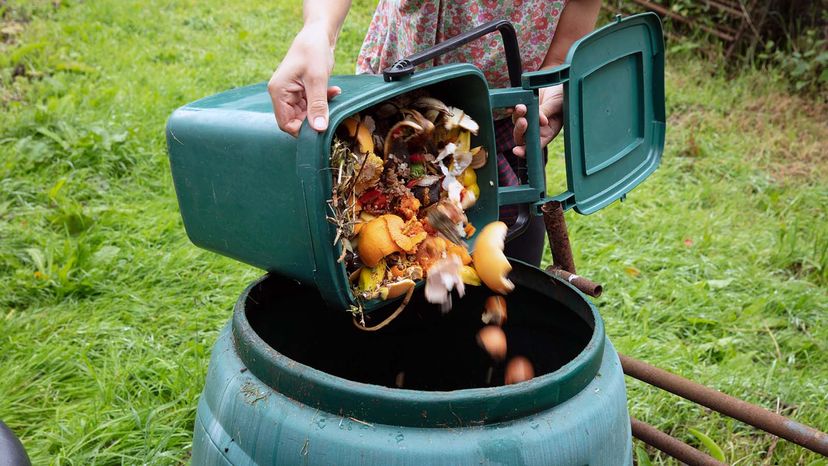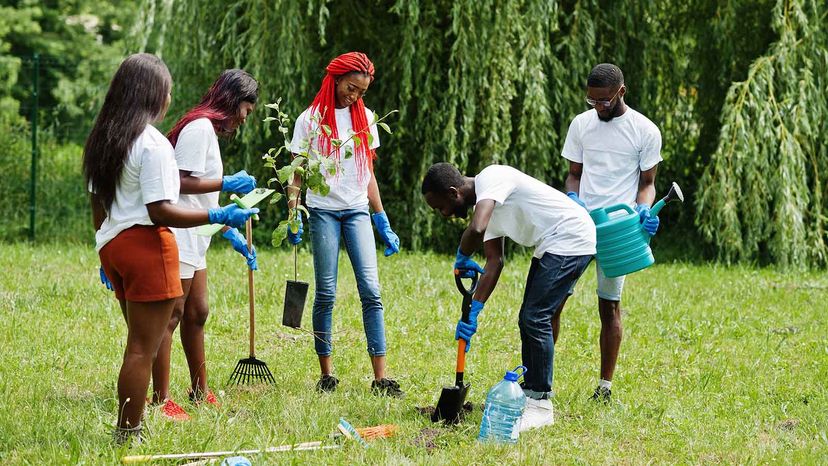
The United Nations suggests that climate change is not just the defining issue of our time, but we are also at a defining moment in history. Weather patterns are changing and will threaten food production, and sea levels are rising and could cause catastrophic flooding across the globe. Countries must make drastic actions to avoid a future with irreversible damage to major ecosystems and planetary climate.
But what about individuals? What can we do to pitch in and help save Earth? There are plenty of things you can do every day to help reduce greenhouse gases and your carbon footprint to make a less harmful impact on the environment. Taking care of Earth is not just a responsibility, it’s a necessity. In that spirit, HowStuffWorks has come up with 10 things you can do now to help save the planet.
1. Conserve Water
The little things can make a big difference. Every time you turn off the water while you’re brushing your teeth, you’re doing something good. Got a leaky faucet? You might be dripping as much as 90 gallons (340 liters) of water down the drain every day[source:[source:EPA]. So fix it! It’s easy and cheap. And stop drinking bottled water. Switch to filtered tap water. You’ll save a ton of cash and help reduce a ton of plastic waste in the process.
2. Be Car-conscious
If you can, stay off the road two days a week or more. You’ll reduce greenhouse gas emissions by an average of 1,590 pounds (721 kilograms) per year[source:[source:EPA]. It’s easier than you think. You can combine your errands — hit the school, grocery store and dog daycare in one trip. And talk to your boss about teleworking. It’s a boon for you and your company. But being car conscious also means maintaining your car on a regular basis. You can improve your gas mileage by 0.6 percent to 3 percent by keeping your tires inflated to the proper pressure, and be sure to make necessary repairs if your car fails emission[source:[source:EPA].
3. Walk, Bike or Take Public Transit

Walking and biking are obvious ways to reduce greenhouse gases. Plus you’ll get some good cardio and burn some calories while you do it. If you live in an area that’s not walkabletake advantage of your local mass transit if you can. Or carpool. Even one car off on the road makes a difference.
4. Reduce, Reuse, Recycle
You can help reduce pollution just by putting that soda can in the recycling bin. It really does make a difference. Paper, too. The average American household dumps 13,000 separate pieces of paper each year, most of it junk mail and packaging[source:[source:Brigham Young University]. But you can also take reusable bags to the grocery, and avoid using disposable plates, spoons, glass, cups and napkins. Contact companies that send you junk mail to get off their mailing lists. When you order online, see if you can group your packages together for mailing. Buy products that are made of recycled materials. And don’t forget to recycle your own paper. It all makes a difference.
5. Give Composting a Try
In 2018, (the last year figures were available) Americans generated 292.4 million tons (265.3 million metric tons) of trash. Only 25 million tons (23 million metric tons) of that was composted. Some was recycled and some was combusted for energy, but half of it — 146 million tons (132 million metric tons) — ended up in the landfill. Imagine if you could divert more of that to your own compost? It would help reduce the amount of solid waste you produce, and what eventually winds up in your local landfill. Plus, compost makes a great natural fertilizer.

Electric Egg/Shutterstock
6. Switch to LEDs
Compact fluorescent light bulbs (CFLs) are great. They can last 10 times longer than incandescent bulbs and they use at least two-thirds less energy, but even CFLS have issues. They’re hard to dispose of because they contain mercury. Enter light-emitting diodeor LED, bulbs. They emit light in a very narrow band wavelength so they’re super energy-efficient. Start replacing your old incandescent bulbs with LED bulbs now (if you haven’t already). They do cost more than CFLs and incandescents, but equivalent LED bulbs can last at least 30,000 hours compared to 1,000 hours for incandescent bulbs, or 8,000 to 10,000 hours for CFLs.
7. Live Energy Wise
Make your home more energy efficient (and save money). Your home’s windows are responsible for 25 to 30 percent of residential heat gain and heat loss. If they’re old and inefficient, consider replacing them. Also be sure your home has proper insulation. Insulation is measured in terms of its thermal resistance or R-value — the higher the R-value, the more effective the insulation. The amount of insulation your home needs depends on the climate, type of HVAC system, and where you’re adding the insulation. Smaller things you can do right away include replacing your air filter regularly so your HVAC system doesn’t have to work overtime. Keep your window treatments closed when it’s extremely hot and cold outside. You can also consider installing a programmable thermostat like Nest so your system isn’t running (and wasting energy) when you’re not home.
8. Eat Sustainable Foods
Today, large-scale food production accounts for as much as 25 percent of the greenhouse emissions. So how do you eat sustainably? Choosing food from farmers that aim to conserve the natural resources and have as little impact on the land as possible. But even buying as much as you can from local farmers makes a different. Eating more whole grains, vegetables, fruits and nuts, and less red meats and processed foods does too. Grow your own fruits and vegetables. You can grow a garden!
9. Plant a Tree (or Two)
The 2023 United Nations’ Intergovernmental Panel on Climate Change (IPCC) report found that things are worse now than ever before. Greenhouse gas emissions continue to rise and most countries are not reducing carbon emissions. But there is a natural way to combat climate change: Plant a tree. Plants naturally absorb carbon from the air. One young tree can absorb CO2 at a rate of 13 pounds (5 kilograms) per tree. Every. Single. Year. And that’s just an itty bitty baby tree. Once that tree reaches about 10 years old, it’s at its most productive stage of carbon storage. Then it can absorb 48 pounds (21 kilograms) of CO2 per year. Trees also remove all other kinds of junk from the air, including sulfur dioxide, nitrogen oxides and small particles. So go ahead, plant a tree. It’s good for everybody.

AS photo family/Shutterstock
10. Give Up Plastics
The statistics are shocking: People around the world buy 1 million plastic drinking bottles every minuteand use up to 5 trillion single-use plastic bags every year. Humans are addicted to plastic, and hardly any of it — about 9 percent — gets recycled. A staggering 68 to 219 million tons (75 to 199 million metric tons) of plastic is currently in our oceans. Break the cycle. Stop buying bottled water. Say no to plastic shopping bags and use cloth bags instead. Don’t use plastic straws. Drink from a reuseable cup instead of a plastic one. Avoiding plastic can divert a ton of waste from the oceans and landfill.
This story is part of Covering Climate Now, a global collaboration of more than 250 news outlets to strengthen coverage of the climate story.
Originally Published: Sep 20, 2019
Save Earth FAQ
How can we save Earth?
There are many ways to save our planet including conserving water, reducing our use of oil and embracing green energy, reducing waste and single-use plastics and planting more trees. If you’re looking for small ways that you can make a difference, search online for ideas of how to get started.
Why is it important to save the Earth?
It is important to save Earth because so far, it is the only completely habitable planet that offers fresh water, food and oxygen for thousands of species, including humans.
How can you adjust your habits to save Earth?
You can adopt a number of habits to save earth. These include avoiding bottled water, replacing car trips with biking and walking whenever possible, reducing food waste and composting, switching to LED lightbulbs, and planting bird and bee-friendly gardens.
What year will the Earth die?
Scientists have different estimations of when they believe that Earth will no longer be habitable if humans continue down the path we’re on. However, humans, animals and ecosystems around the globe are already experiencing the negative effects of climate change.
What will happen to the Earth if we keep polluting?
More pollution will cause the Earth’s temperate to rise, causing a variety of issues including increased natural disasters, the destruction of habitats, and many other serious problems.
Lots More Information
Related Articles
More Great Links
Advertisement
Note: This article have been indexed to our site. We do not claim legitimacy, ownership or copyright of any of the content above. To see the article at original source Click Here












